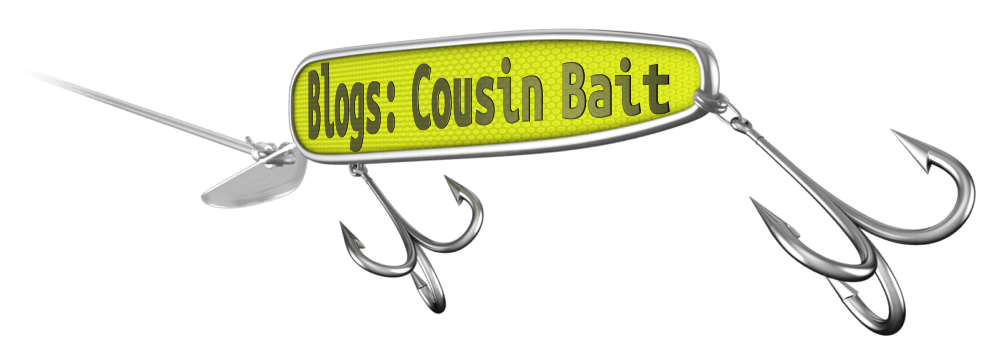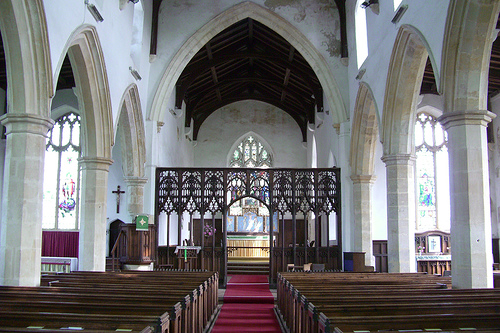by Lisa Cooke | Dec 5, 2013 | 01 What's New, DNA, History
 Here’s a cool website about ancient civilizations. It’s TheAncientWeb.com, and it looks like a fun and easy way to get up to speed on history.
Here’s a cool website about ancient civilizations. It’s TheAncientWeb.com, and it looks like a fun and easy way to get up to speed on history.
As the title hints, this site is all about deep roots. It covers ancient societies in all parts of the world: North and South America, Europe, the Near East, Africa, Asia and Oceania. You’ll find history and images of artifacts on peoples ranging from Arabians to Vikings!
This is a great interactive tool for brushing up on ancient history. Check it out with your kids or grandkids who are exploring these topics in school or because they’re reading books like the Percy Jackson & the Olympians Series
(based on Greek and Roman mythology).
But this is also a helpful resource if you’re looking to learn more about your “deep ancestry” as identified by DNA tests. You may never know if you descend from a famous (or infamous) warlord, ruler or explorer. But genetic tests are becoming more specific about deep geographic roots. So maybe it’s worth checking out a little Viking warrior fashion or learn about the ancient empire of the Mandingo on this site!
by Lisa Cooke | Dec 4, 2013 | 01 What's New, Digital Archives
 I’ve blogged before about the relatively new Digital Public Library of America (here’s a post introducing the DPLA and here’s one on historical maps you’ll find there). Now the Library of Congress has posted a 31-minute webcast that features the DPLA content director, Emily Gore. She not only demonstrates some great examples of what you can find in the public portal of the DPLA, but also discusses the potential for gathering even more materials (she gives an example using local sources.) It’s a great introduction to the site, and Gore answers some questions from the audience that seem to be on a lot of people’s minds.
I’ve blogged before about the relatively new Digital Public Library of America (here’s a post introducing the DPLA and here’s one on historical maps you’ll find there). Now the Library of Congress has posted a 31-minute webcast that features the DPLA content director, Emily Gore. She not only demonstrates some great examples of what you can find in the public portal of the DPLA, but also discusses the potential for gathering even more materials (she gives an example using local sources.) It’s a great introduction to the site, and Gore answers some questions from the audience that seem to be on a lot of people’s minds.
Looking for a more basic intro to the DPLA? Check out this introductory video, too.
by Lisa Cooke | Dec 3, 2013 | 01 What's New, Collaborate
Congratulations to Amanda, the winner of our Family Tree Magazine Digital Subscription Giveaway!
We did the giveaway to celebrate my article in the December 2013 issue of Family Tree Magazine, co-written with Genealogy Gems Contributing Editor Sunny Morton. The article is all about collaborating on our genealogy research.
 I think it’s cool that Amanda’s big on collaboration herself. She blogs about her research at ABT-UNK. (Yes, that’s the name of her blog: it combines two common genealogy abbreviations for “about” and “unknown.”) Amanda points us to a recent post, “a really good example of collaboration via my blog. The two photos in the post http://www.honeytraveler.com/pharmacy/ were provided by two cousins of different degrees who found me via my blog, and five different people (so far) have been involved in identifying the people in the “Christmas Cousins” picture. I’ve connected with lots of other kin who found me via my blog (including a distant cousin in Lithuania, who helped me break through a brick wall there), and they have provided a wealth of information and wonderful photographs!”
I think it’s cool that Amanda’s big on collaboration herself. She blogs about her research at ABT-UNK. (Yes, that’s the name of her blog: it combines two common genealogy abbreviations for “about” and “unknown.”) Amanda points us to a recent post, “a really good example of collaboration via my blog. The two photos in the post http://www.honeytraveler.com/pharmacy/ were provided by two cousins of different degrees who found me via my blog, and five different people (so far) have been involved in identifying the people in the “Christmas Cousins” picture. I’ve connected with lots of other kin who found me via my blog (including a distant cousin in Lithuania, who helped me break through a brick wall there), and they have provided a wealth of information and wonderful photographs!”
Congratulations, Amanda, both on winning our giveaway and on your excellent research and blog. Keep it up! And thanks to Family Tree Magazine Editor Diane Haddad for donating the subscription.
by Lisa Cooke | Dec 3, 2013 | 01 What's New, Census, Family History Podcast
 Originally published Fall 2008
Originally published Fall 2008
Republished Dec. 3, 2013
[display_podcast]
Download the Show Notes for this Episode
Welcome to this step-by-step series for beginning genealogists—and more experienced ones who want to brush up or learn something new. I first ran this series in 2008. So many people have asked about it, I’m bringing it back in weekly segments.
Episode 9: Using Census Records
In this episode we start off by talking about a group of records critical to family history research in my home country: U.S. Federal Census Records. You’ll learn not only what to find in the regular schedules, but about the enumerators, the instructions they followed, and special sections like the economic census.
Then in our second segment we go straight to the source: Bill Maury, Chief of History Staff at the U.S. Census Bureau. I’ll be talking to him about the History section of the Census Department’s website. Note the updated Genealogy tab on the site, as well as the Through the Decades tab, which is packed with historical information for each census.
Updates
Since the show first aired, the 1940 U.S. Census has become publicly available. This was the largest, most comprehensive census taken, with over 132 million names of those known as the “greatest generation.” Full indexes and images are available at several sites. Your first stop should be the National Archives’ official 1940 census website to learn about the census itself. Then search it at your favorite genealogy data site in one of the links below.
Finally, I gave you specific instructions in the podcast on searching the 1930 U.S. Census online at Ancestry.com. To specifically search any of the U.S. censuses (or any other record collection) at Ancestry.com, go to the Search tab and select Card Catalog. You’ll see several censuses among the options they give you, or you can enter keywords like “1940 census.”
Links
Search U.S. censuses online at:
Ancestry.com
Archives.com
FamilySearch.org
findmypast.com
worldvitalrecords.com
OR Learn more about researching from microfilm at the National Archives website.
by Lisa Cooke | Dec 3, 2013 | 01 What's New, British, Church, FamilySearch
Over a million Church of England records from the county of Norfolk are among materials now indexed at FamilySearch.org.

Happisburgh church of St. Mary’s, Norfolk. Image by Martin at Flickr Creative Commons.
The collection includes bishops’ registers of baptisms, marriages and burials from the mid-1600s to the mid-1900s.
- Baptismal records may include the child’s name, date and place of baptism, parents’ names and residence, legitimacy status of the child, father’s occupation and minister’s name.
- Marriage records may include the names, ages, marital status and residence of bride and groom; date and place of marriage; fathers of the bride and groom and information on whether banns were published.
- Burial records may include the name, age, and residence of the deceased and the date and parish of burial.
The Church of England was a state-sponsored church. This helps genealogists because it means that most everyone who lived there (until the mid-1800s or so) is likely to show up in Church of England records. So if you had English ancestors who lived in Norfolk, take a look. These images have been online since 2010, but the new index makes them a lot easier to search!
 Here’s a cool website about ancient civilizations. It’s TheAncientWeb.com, and it looks like a fun and easy way to get up to speed on history.
Here’s a cool website about ancient civilizations. It’s TheAncientWeb.com, and it looks like a fun and easy way to get up to speed on history.

 I think it’s cool that Amanda’s big on collaboration herself. She blogs about her research at
I think it’s cool that Amanda’s big on collaboration herself. She blogs about her research at 




